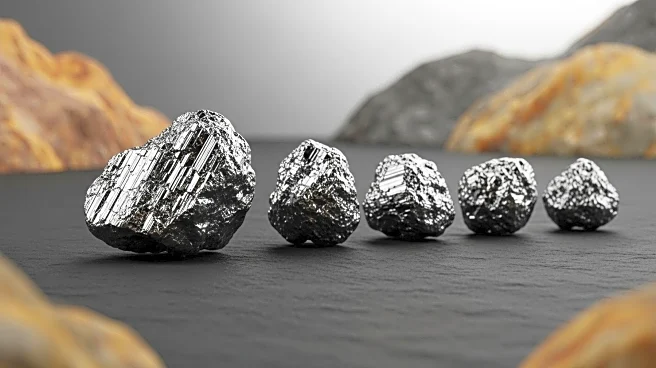What is the story about?
What's Happening?
Military Metals is initiating a soil geochemical survey at its Last Chance Project in Nevada, aiming to follow up on promising trends identified in a recent geological field program. The survey, set to begin around September 29, will involve collecting up to 1,000 samples to analyze alteration and mineralization structures before drilling. The sampling will be conducted at 75-foot stations with lines spaced 150 feet apart. Recent samples from the project returned stibnite grades of up to 6.66% and 11.61%, indicating significant mineralization potential. CEO Scott Eldridge highlights the growing demand for munition-related commodities, emphasizing the importance of domestic antimony sources.
Why It's Important?
The soil sampling campaign at the Last Chance Project is a strategic move by Military Metals to enhance its exploration efforts for antimony, a critical mineral in the U.S. Antimony is essential for various applications, including munitions, and its domestic production is crucial for national security. The U.S. has officially listed antimony as a critical mineral, which means it receives special attention in policy and planning. By identifying and developing domestic sources, Military Metals contributes to reducing reliance on foreign imports, potentially stabilizing supply chains and supporting U.S. industries that depend on antimony.
What's Next?
Following the soil sampling campaign, Military Metals plans to integrate the survey results with existing data to refine its drilling program. This will help pinpoint mineralized structures and enhance the company's chances of discovery. The successful identification of antimony deposits could lead to further exploration and development activities, potentially increasing domestic production. Stakeholders, including industry leaders and policymakers, will likely watch these developments closely, given the strategic importance of antimony. The campaign's outcomes could influence future investments in mineral exploration and production.
AI Generated Content
Do you find this article useful?














